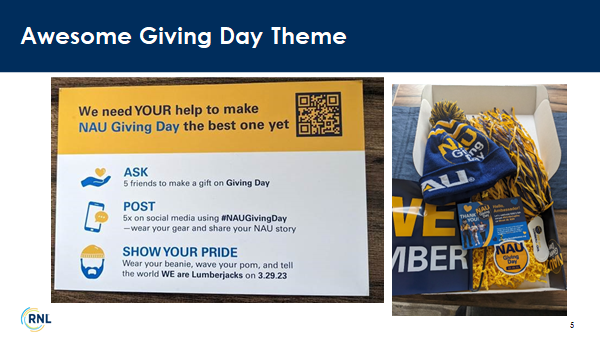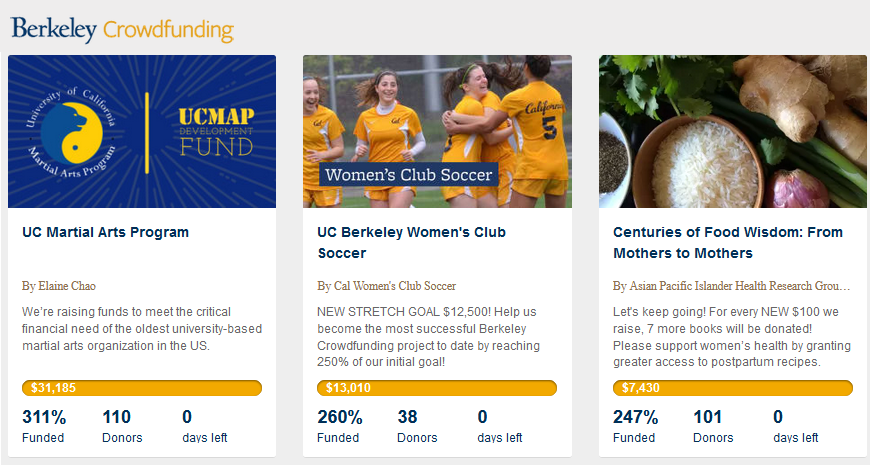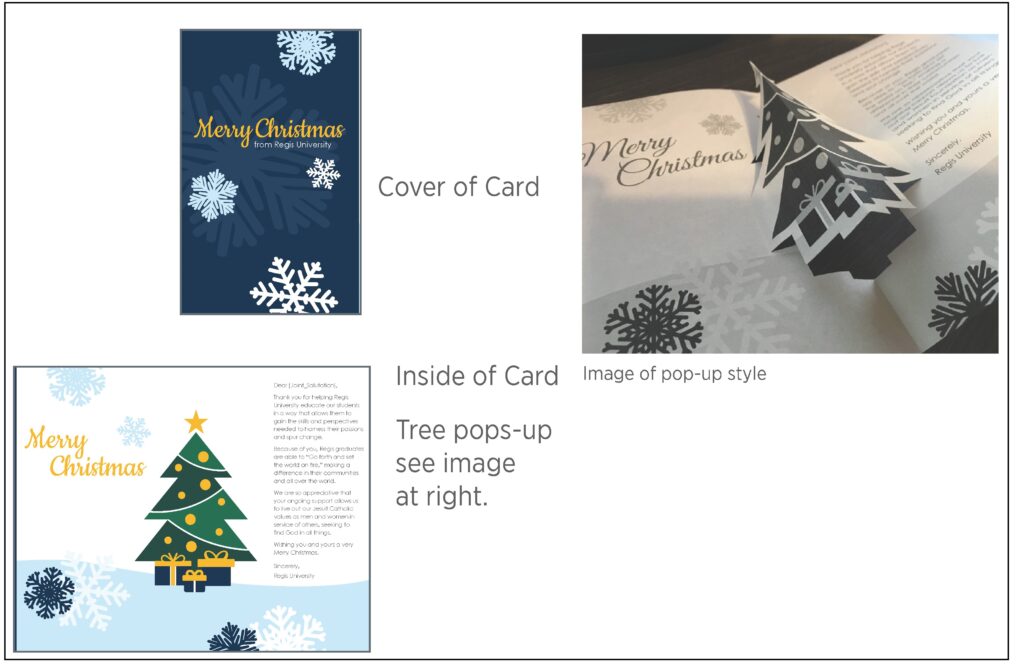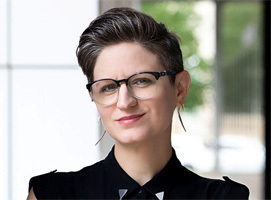fundraising
3 Great Ways to Boost Donor Acquisition for FY24
Fundraiser hears the words: “Donor acquisition:” cue dramatic music and sense of impending dread.
Or at least that’s how I feel this topic is viewed by many fundraisers. Unfortunately, the trepidation surrounding this key goal is deepening with recent changes to participation rate tracking and what that means for development shops in higher education, in particular. We will cover some excellent new donor acquisition tactics during our upcoming RNL National Donor Workshop with stellar co-presenter Heather Kopec from the University of Miami. I hope you’ll join us, and here’s a preview.
1. Utilize giving days to excite and welcome first-time donors
The concept behind giving days and the reason they work is not new. The idea of time-based pushes for giving has been used in fundraising for decades. Giving days are like a digital Jerry Lewis Telethon or the painted thermometer in front of the new playground. Three things are key: a finite time period, a bandwagon approach, and a shared goal or challenge. Events are also about making giving fun, which is crucial for donor acquisition success.
Normally, giving messaging is limited to our solicitations, a few donor stories in alumni magazines, and our giving sites. People who are not already aware of the importance of giving might miss our message. Asking new donors for money is hard, and one of the most powerful aspects of the giving day model is the way it allows us to talk about giving loudly and proudly without annoying people.

Image: Northern Arizona University had an Awesome Giving Day Theme in 2023 that won them an RNL Givey Award. They doubled down with awesome ambassador engagement that helped boost new donor acquisition.
With Giving Day we can go “all giving, all the time” for a short period where we welcome and encourage others – staff, faculty, coaches, volunteers – to spread the message as well. This peer-to-peer model is especially effective for acquisition, and giving days are tailor-made for this P2P approach.
The gamification and donor challenge aspects of giving days are perfect for first-time donors as well. Giving day platforms like RNL ScaleFunder offer the ability to identify and track how many first-time donors you’re welcoming, noting them in leaderboards and matches/challenges. This is a great way to incentivize newcomers and celebrate their contributions.
If you haven’t already, set aside some time to examine your strategy for donor acquisition around giving day events and see how you can further optimize them.

2. Engage micro-campaigns and cause-cased crowdfunding as donor acquisition engines
Industry-wide research tells us that all generations – but especially the youngest, value the direct impact of their giving. You can still create very compelling and persuasive cases around unrestricted funds, but specificity is likely going to be more effective for attracting first-time donors.
Your community of alumni, parents and families, friends, fans, and community members are likely to be generous and already philanthropic towards causes they are passionate about. Setting up ways for them to give to funds and projects that align with these causes through your organization opens the door and welcomes them to give where they are at, instead of trying to funnel them through a maze to a single option and running the very real risk of losing them along the way.

Image: The University of California, Berkeley’s Crowdfunding program has raised over $2.3 million as an RNL ScaleFunder partner. Their robust selection of annual projects embrace a wide range of donor passions
The good news is that you likely already have an idea of the types of campaigns that would be of interest to your prospects based on affinity and activity data. Parents and families are inclined to support the sports, clubs, groups, and opportunities in which their students are involved. Alumni with degrees in environmental science may be interested in supporting sustainability projects on campus, while those with business degrees might be interested in funding an entrepreneurial incubator. Community members might see value in a shared recreation center or performing/visual arts space.
Crowdfunding has been an accepted and trusted form of community giving for over a decade now, and incorporating it into your organization aligns with current societal and philanthropic expectations.
Similar to giving days, these campaigns also allow you to leverage ambassadors and champions to spread the word and encourage their networks to give. Depending on how you structure these campaigns, it is important to plan for ease of giving. This could include QR codes on mail pieces, texted links and reminders, or digital wallet payment options (Venmo, ApplePay, Paypal) on your giving forms.
3. Use a wrap-around experience with donor acquisition: education, warming, stewardship to fuel donor next steps
If you’re anything like I was as an annual fund practitioner, you’re constantly juggling a million balls and racing from one key deadline to the next while chasing the yearly dollar and donor goals set by leadership. It can be easy to narrow your focus to the current fiscal year, but a truly successful annual giving program requires long-term planning and tactics that extend beyond immediate deadlines.
Planning your yearly solicitation schedule is critical. However, I advocate for dedicating just as much time to planning what I refer to as the “wrap-around experience” to encourage and prepare for greater acquisition success.
This starts with educating your key donor audiences. Before making a request for support, ask yourself some important questions. How are you informing students, volunteers, or younger donors about the impact of philanthropy at your organization from day one? Are you including them in asks for causes they care about during giving days and crowdfunding campaigns? Do you have a model to share with parents, families, and community members, demonstrating how charitable gifts will shape their students’ experience from the first tour to graduation? Are there opportunities to communicate with the surrounding community about how philanthropy creates shared benefits for the neighborhood and beyond?
Don’t just focus on how you will get the mail and emails out. Ask yourself: If your prospects are not aware of the importance of giving, how can they understand their potential role in it?
The process of warming up donors and how you will thank them after they give (stewardship) must work in tandem. It’s not enough to acquire a donor and then move on. From the moment a gift is secured, there should be a strategic effort to provide personalized stewardship and follow-up, ensuring that each new donor is retained and becomes a loyal supporter.

Image: Regis University’s 2022 Holiday card featured a unique pop-up style thanking donors, and reminding them of the impact of their giving, with a strong message tied to the institution’s Jesuit mission.
I encourage you to examine your current thank-you and post-gift information sharing efforts through a “new-donor” lens. Think carefully about what a new donor receives and build out key touchpoints for this important audience. First Time Donor messaging and enhanced gift impact communication drive home how grateful you are and how important their gift is.
Another key point to consider is the ability to offer recurring gift options and stewardship/follow-up strategies to match this specific type of donor. Almost everyone is familiar with subscription-based services and these are becoming so common, everyone just expects them. Move those first-time donors to more sticky, regular contributors.
Donor acquisition isn’t a necessary evil, it’s a crucial part of the donor pipeline
A large donor base is crucial to our future philanthropic pipeline, and that will never change, regardless of how rankings are calculated. The investment and work we put in today will directly translate into strong fundraising results for decades to come and we should continue to pursue high acquisition numbers with discipline and long-term focus.
Our communities are filled with generous and caring individuals. We have a tremendous opportunity to connect them to new ways to make a difference as donors. Instead of feeling a sense of dread, we should let the words “donor acquisition” ignite our creativity. We have numerous tools at our disposal that can work in our favor if we simply listen to what our potential donors are already telling us, align our outreach with their expectations, and step aside to let the joy of giving unfold.
What’s your best path to sustainable fundraising?
Let’s talk about how we can help you build a robust donor pipeline, engage the right donors at the right time, and chart a course to fundraising success year after year.
